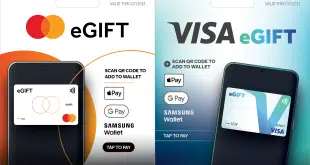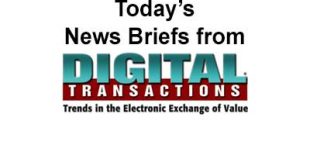Ten years ago, the U.S. payment card market made its shift to EMV chip cards, and along with that the industry prepared for more contactless payments. That work by issuers and card brands appears to have paid off because 92% of consumers are now familiar with NFC, the technology that enables contactless payments.
That’s part of the latest research from the NFC Forum, an advocacy group for near-field communication technology, in its 2024 Annual Report. The research, which was conducted by ABI Research, also found that most consumers—82%—have used a smart phone or watch to make a contactless payment, and 55% would prefer to use these devices instead of a credit or debit card. An ABI Research survey included 2,632 responses across nine countries, including the United States, China, Japan, South Korea, and some in Europe. In the 2022 report, 47% preferred to use a smart phone or smart watch in lieu of a contactless card.
Still, contactless credit and debit cards are the preferred contactless payment method for 45%, followed by smart phones, 39%, and smart watches, 16%. Notably, that is a shift from the 2022 study, when 53% preferred a card, 33% smart phones, and 14% smart watches.

The report also cites a change in perception among consumers about the utility of NFC technology. “Daily use of mobile payment platforms is becoming increasingly common, with users citing the security, reliability and convenience of digital solutions as core driving factors,” Andrew Zignani, research director at ABI Research, says in the report. “As familiarity and understanding of NFC continues to grow, so too does demand for additional applications and use cases for the technology.” A whopping 92% of respondents are familiar with NFC. Daily use of contactless payments, at 57% in 2024, was up dramatically from 15% in 2022.
“We are now entering an end user perception step change whereby NFC is not just considered a payments technology, but a technology that can underpin a variety of different applications and use cases, such as the ability to tap to receive additional product information, for digital car and/or house key storage, use across brand protection or tap to register a product warranty to name but a few.”
Along these lines, the NFC Forum lists five components of its technology roadmap for the tech. These include increased range (currently at 5 millimeters), multipurpose tap, improved reader functionality, increased power for NFC wireless charging, and expanded ability to further sustainability efforts.
Increasing the range, for example, could make NFC more useful and user-friendly, an NFC Forum spokesperson says. It is in the process of evaluating ranges up to 20 millimeters.
“Increasing the range will mean that as two NFC Forum-compliant devices come into close proximity with one another, the communication can start earlier and continue longer over a normal tap experience. This will decrease the need for precise antenna alignments between two NFC devices, enhancing its usability and making transactions faster,” the spokesperson says.
“The widespread adoption of NFC within payments represents the first step along the long arc of contactless,” she continues. “The continued acceleration of NFC-based digital solutions across new and emerging use cases is contributing to the technology becoming a ubiquitous part of all our lives.”
The Wakefield, Mass.-based NFC Forum was formed in 2004. The first NFC spec registered as an international standard was developed in 2003 by Sony and Philips.





